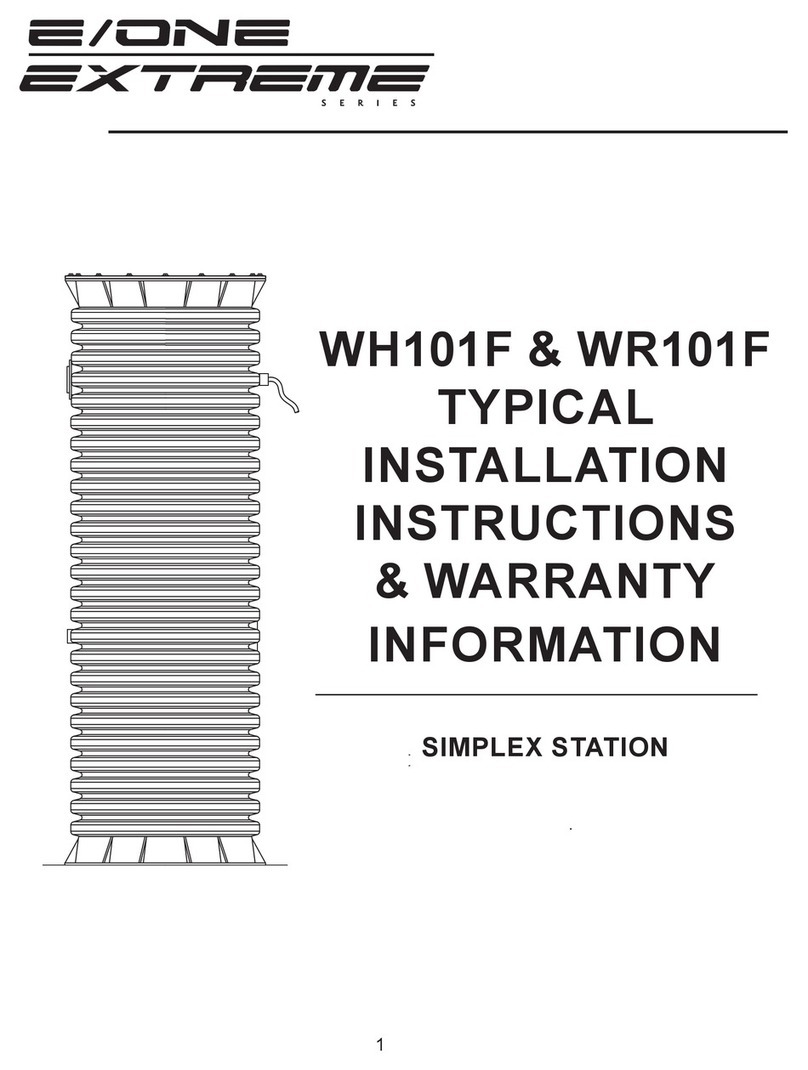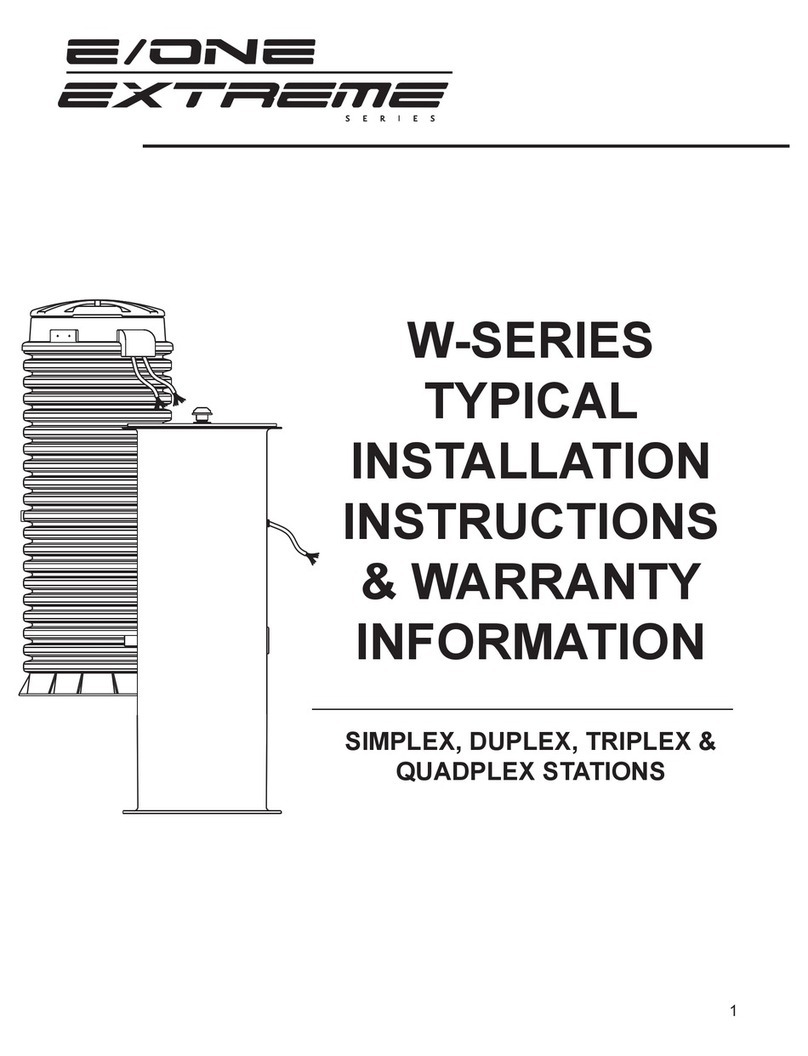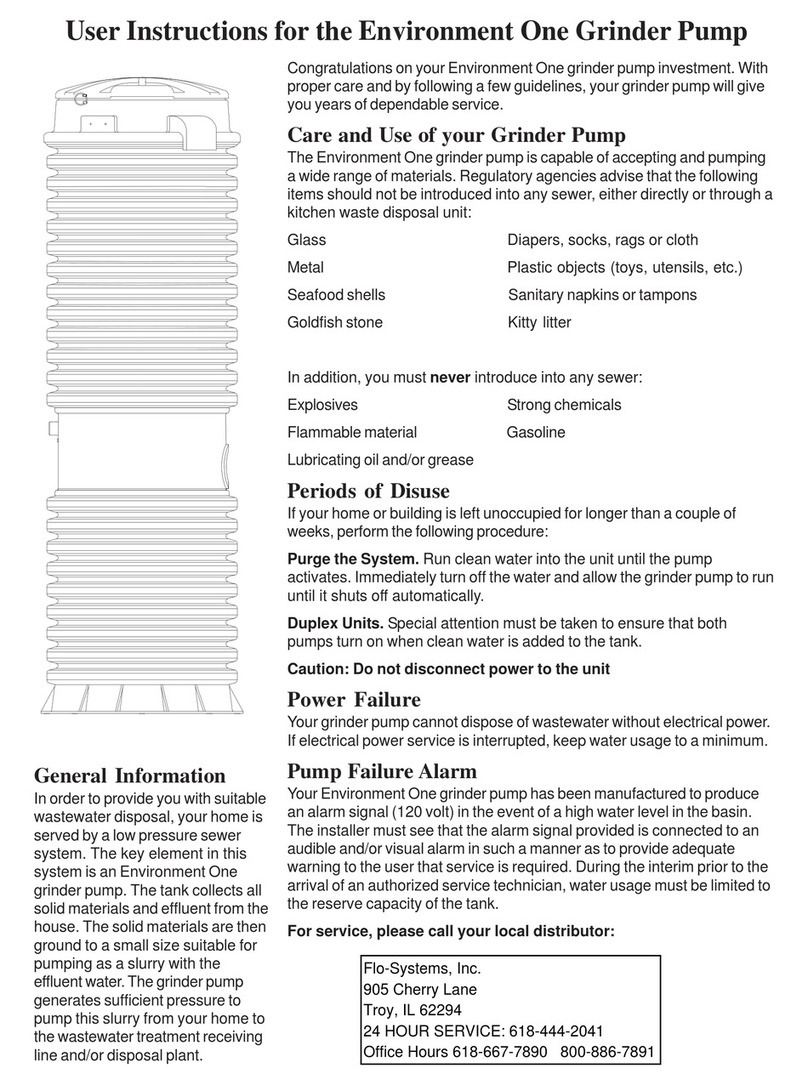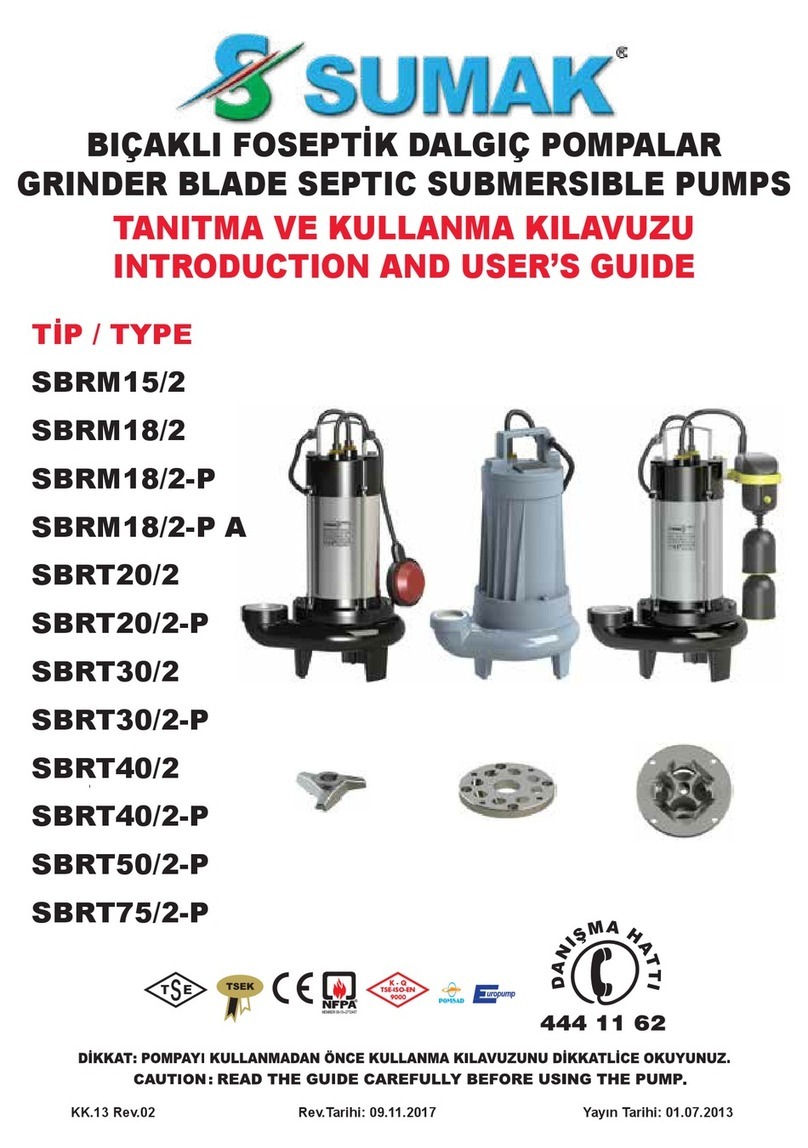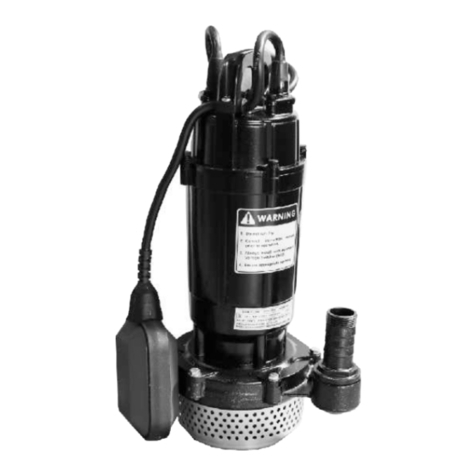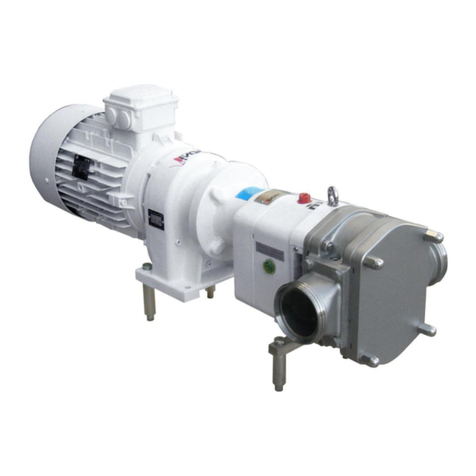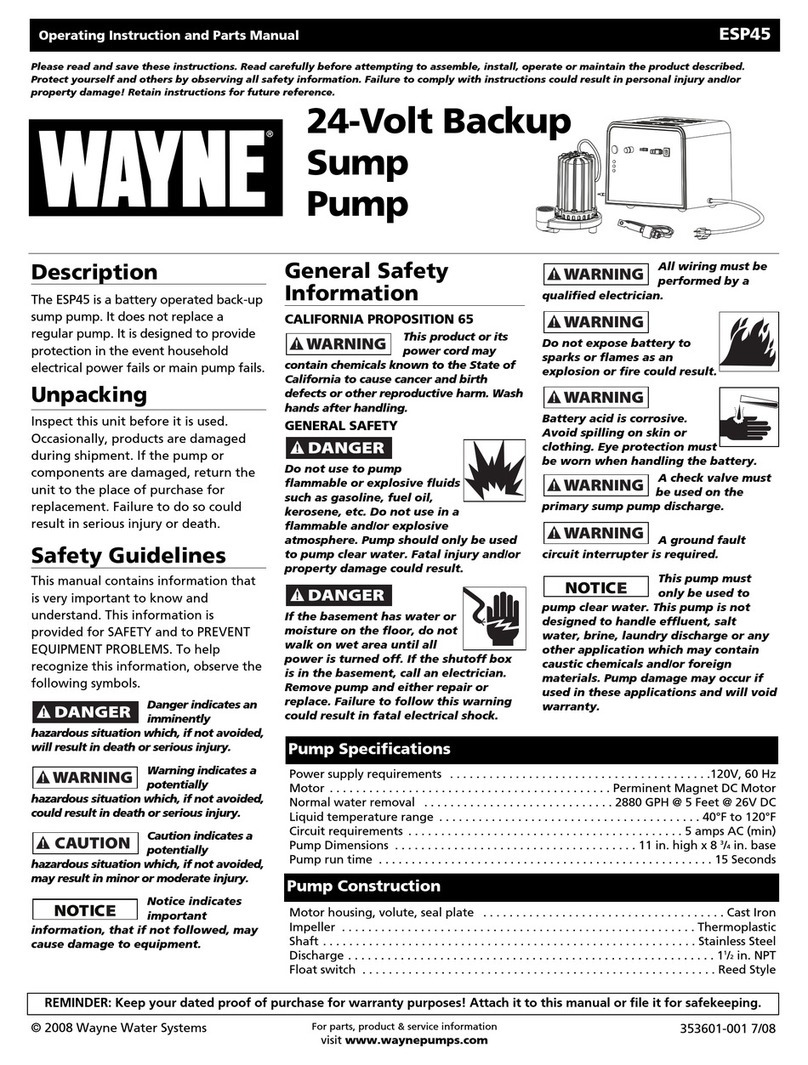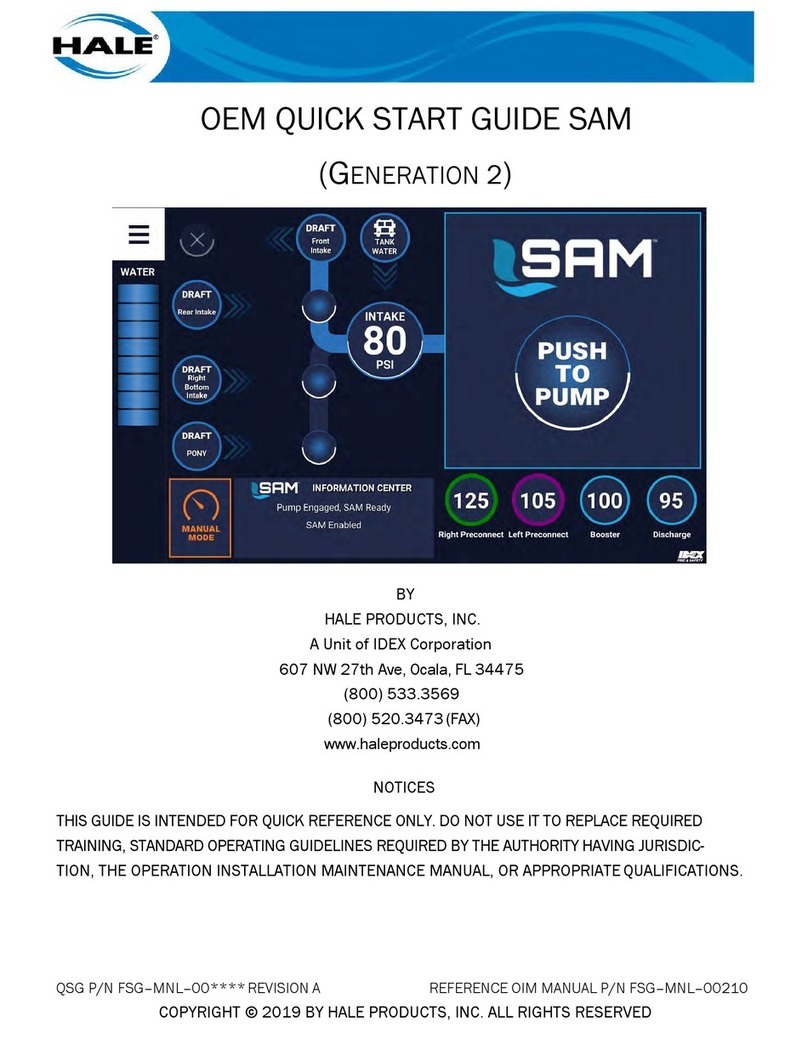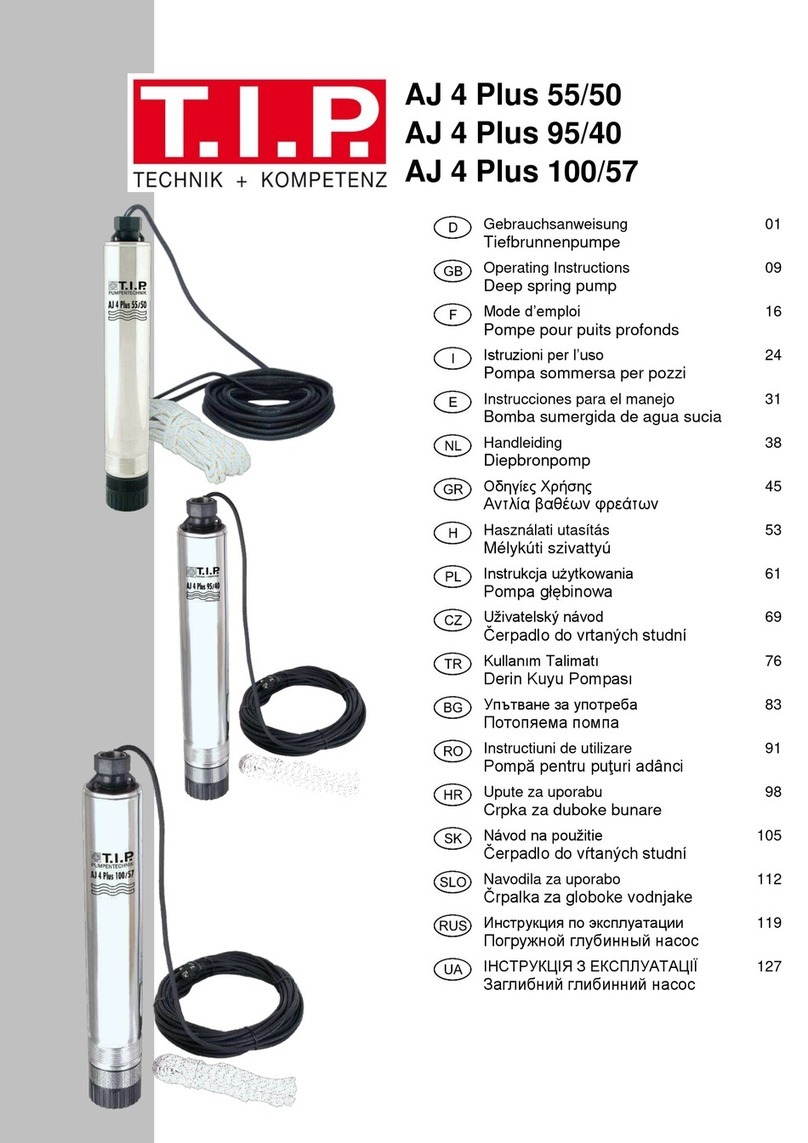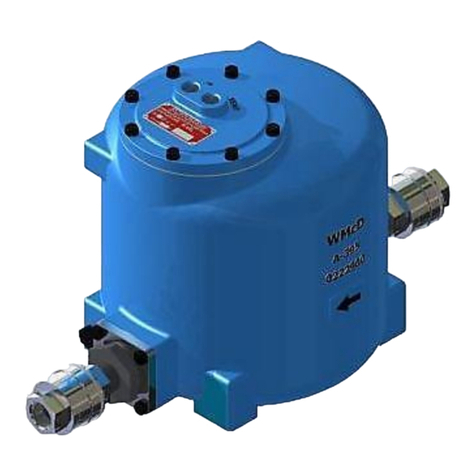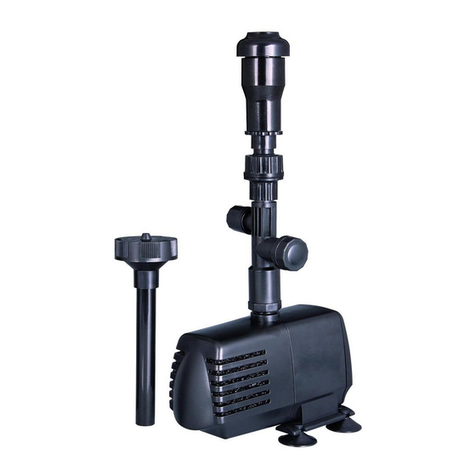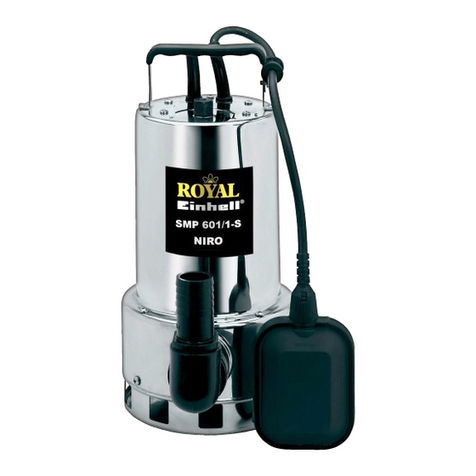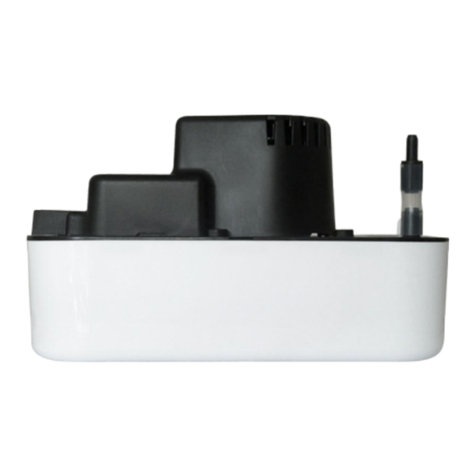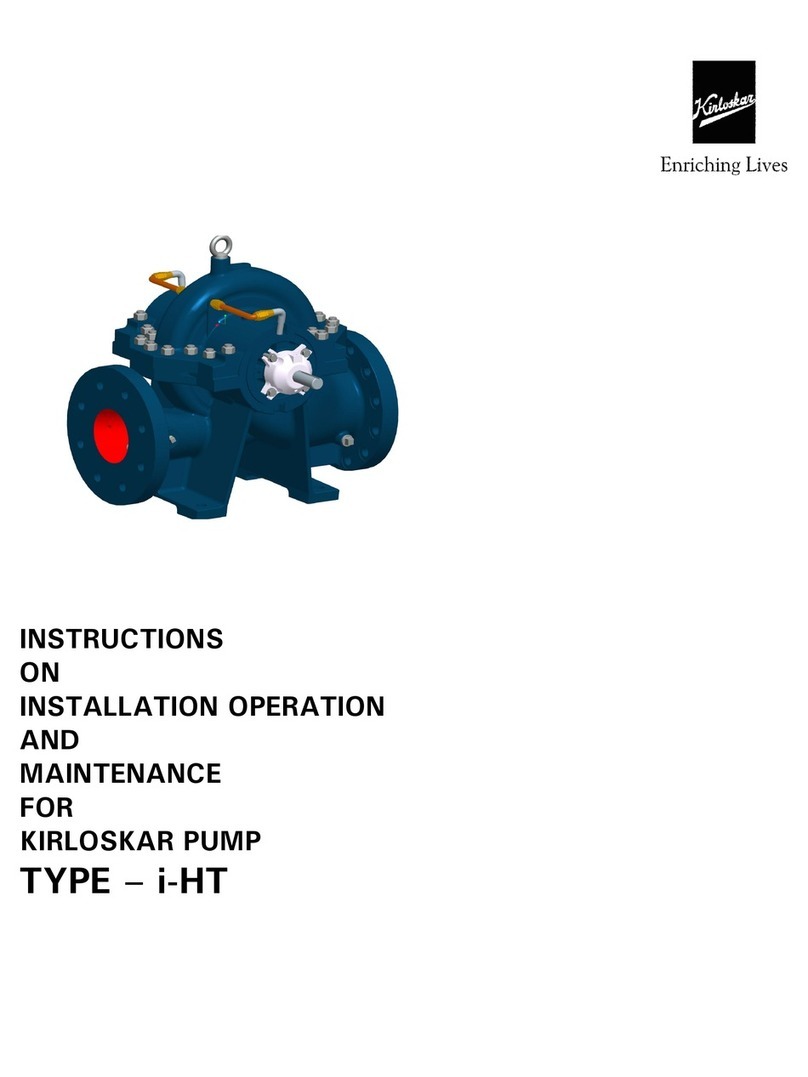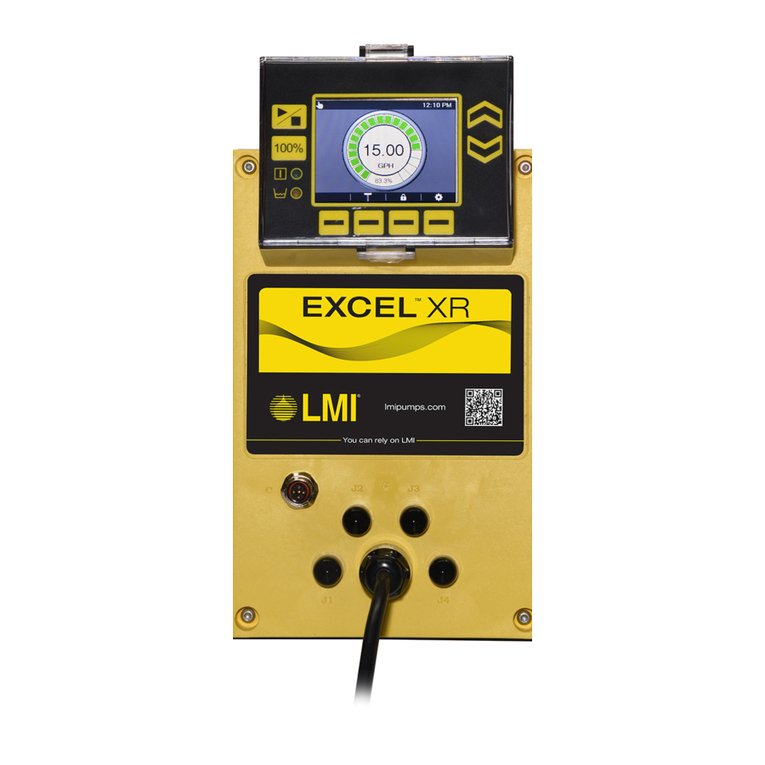
9
provided.
5) Run the cable
underground, in a trench or
tunnel, to the location of the
alarm panel. Leave a 6- to 12-
inch loop of cable at each end
to allow for shifting and settling.
Connections made at the panel
are shown in the panel wiring
diagram (Figures 2a–2d).
10. GRINDER PUMP STAND
ASSEMBLY: Temporarily
rest the grinder pump on its
side. Using a block of wood
or similar object, prop up
the lower pump end to allow
installation of the pump stand.
Align the two legs of each
pump stand half with two of
the holes in the pump lower
end (Figure 5). Push the stand
legs into the pump lower end.
Using a mallet, ensure that
the stand legs bottom into the
mounting holes. Repeat for the
other stand half. Turn the pump
upright on the installed stand.
11. DEBRIS REMOVAL:
Prior to start-up test procedure,
the incoming sewer line
must be ushed to force all
miscellaneous debris into
the tank. Next, all liquid and
debris must be removed. Once
the tank is clean, install the
pump(s) and proceed with the
test.
12. INSTALL THE PUMP:
Lower the pump into the
tank. Position the pump so
the pump’s discharge is on
the opposite side of the pump
relative to the discharge in
the tank. Position the pump
in the center of the tank.
Rotate to coil the discharge
hose and slide the adapter on
the discharge hose into the
receiver in the tank wall until
it seats. Push the white slider
down to open the discharge
valve. Refer to Figures 8–11
for slideface connection and
operation.
Hang power cable, breather
tubing with Equalizer, and
lifting rope to prevent them
from laying in sewage. The
Equalizer should be hung as
high as possible in the tank.
13. TEST PROCEDURE
The following steps should
be taken to verify proper
installation and operation:
a) Make sure that the
discharge slide face valve(s)
is fully open. This valve(s)
must not be closed when the
pump is operating. In some
installations, there may be a
valve, or valves, at the street
main that must also be open.
(Ignore all Trouble
indications, LEDs and/or
messages until the panel
is reset at the end of this
procedure.)
For model WH/WR 471:
b) Fill the tank with
approximately 200 gallons of
water (approximately up to the
top of the grinder pump).
c) Turn on the pump power
and alarm circuit breakers in
the alarm panel. The grinder
pump and alarm should turn on
immediately.
d) Monitor the pump and
alarm to ensure they are
operating correctly. The alarm
will shut off at a water level
of approximately 18” from the
bottom. The grinder pump
will shut off at a water level
of approximately 14” from the
bottom. Proceed to Step i.
For model WH/WR 472:
b) Fill the tank with
approximately 200 gallons of
water (approximately up to the
top of the grinder pump).
c) Turn on the Pump #1
power breaker and the alarm
circuit breakers in the alarm
panel. Grinder Pump #1 and
the alarm should turn on
immediately.
d) Monitor the pump and
alarm to ensure they are
operating correctly. The alarm
will shut off at a water level
of approximately 18” from the
bottom. The grinder pump
will shut off at a water level
of approximately 14” from the
bottom.
e) Turn off the Pump #1 and
alarm circuit breakers.
f) Rell the tank with
approximately 200 gallons of
water (approximately up to the
top of the grinder pump).
g) Turn on the Pump #2
power breaker and the alarm
circuit breakers in the alarm
panel. Grinder Pump #2 and
the alarm should turn on
immediately.
h) Monitor the pump and
alarm to ensure they are
operating correctly. The alarm
will shut off at a water level
of approximately 18” from the
bottom. The grinder pump
will shut off at a water level
of approximately 14” from the
bottom.
i) Clear/Reset the alarm
panel:
Sentry and T260 panels:
Reset is not required.
Protect Panel: Turn pump
and alarm breakers off and
back on simultaneously.
Protect Plus Panels: Perform
a “cold start” from the Initialize
System menu. Any user setting
that were previously chosen
will not be reset.
j) If any Trouble or alarm
conditions are indicated after
the panel is reset, contact your
local service provider.




















